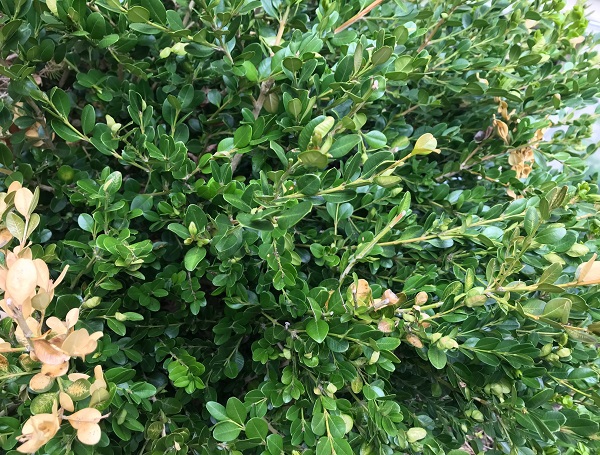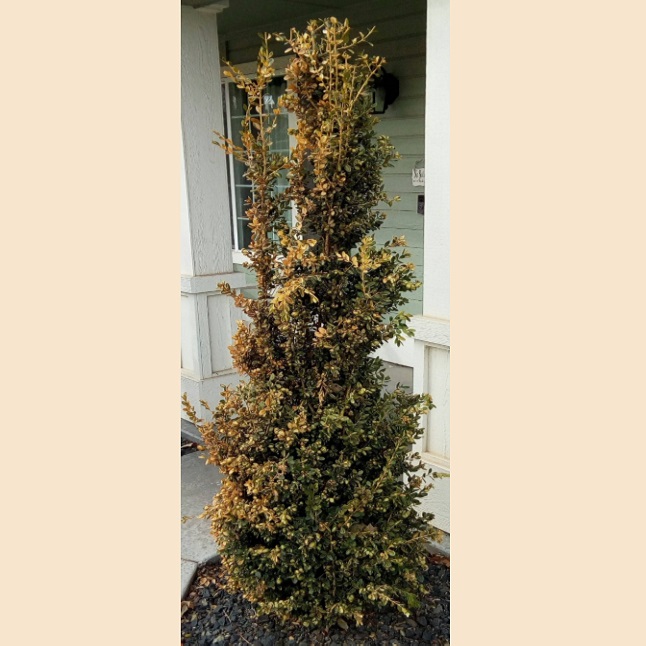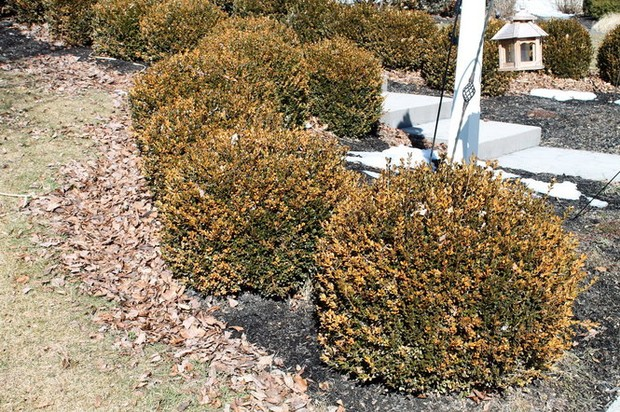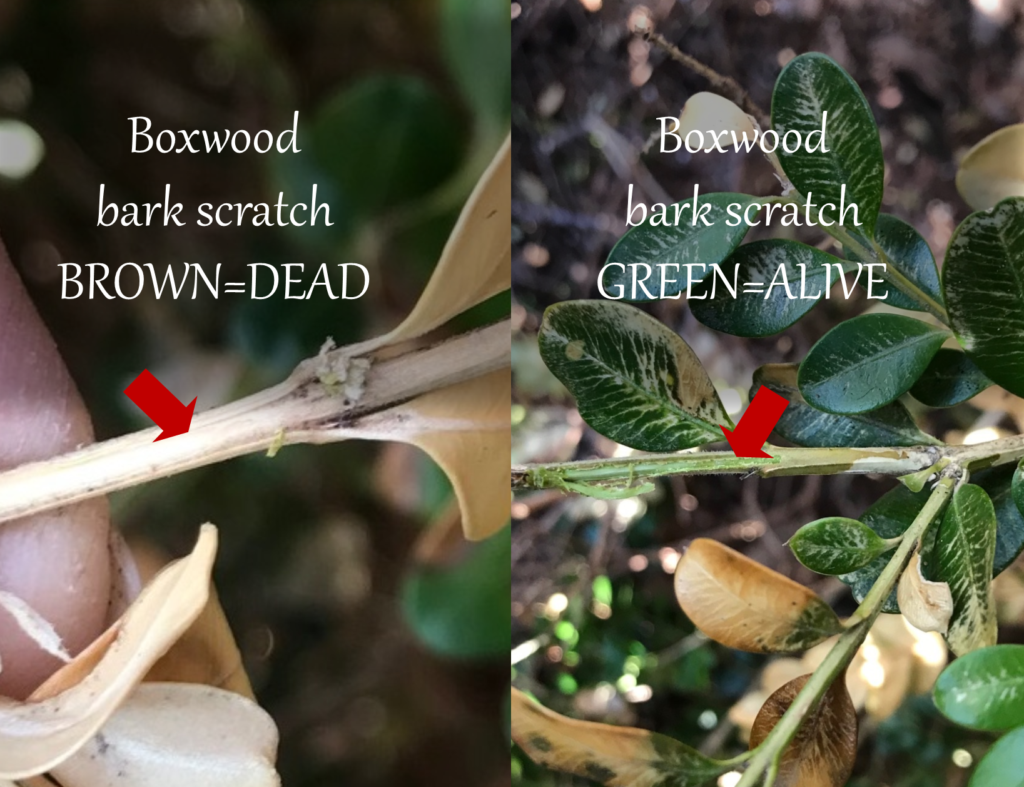Is My Boxwood Dead?
Is my boxwood dead or does it just look like it? Well, that depends. In Chicagoland, we had a rough winter. That polar vortex descended rapidly, froze the ground, stayed for way too long, and leafy evergreens paid a price. Perhaps your boxwood looks like this:

Or this:

Or even this.

Tell-tale symptoms of (1) brown outer branches with green interior, (2) ground-level green but top-level brown, or (3) only brown on the south to west to north “hemisphere” of growth indicates it’s probably winterburn.
What exactly is winterburn?
It’s a condition in which the leaves have desiccated (dried out) due to the leafy portion still transpiring (exhaling) moisture but the ground is frozen preventing water uptake. Add to that howling windy conditions and brutally cold sunny days, and it’s a perfect recipe for all the transpiring with no ability to replace the moisture from a frozen root zone. Basically, it’s like freeze-drying, and boxwoods are particularly susceptible to it because their leaf structure.
So, what do I do? If your boxwood was only marginally hardy (and different varieties have different hardiness levels), it may be dead because our winter was extreme. A quick way to tell is to scratch through the bark of a stem to see if there is green underneath indicating it’s still alive.

If your boxwood is only marginally brown, still alive and could withstand a bit of pruning, make your cut just above a green leaf. If your boxwood has a whole chunk affected or a whole top, give it a while if the scratch test proved green. You will be amazed at the resiliency of plants as their brown leaves get pushed off by emerging green buds. Even into June this can happen, particularly if you’re having a cold, cloudy spring as we have had in Chicagoland.
Be sure to keep the root zone moist (but not wet) as that will help with emerging leaves. A balanced fertilizer or one designed for trees and shrubs is also helpful as your boxwood tries to recover. If your boxwood is dead, no amount of moisture or fertilizer will bring it back from the dead. One last reason for browning is disease, but that’s far less common than winterburn.
With a little detective work, you can figure out if your boxwood is actually dead or just a little winter weary as are the rest of us. For more information, check out the Chicago Botanic Garden’s website: https://www.chicagobotanic.org/plantinfo/winterburn


2 Comments
by Haney Daniels
On June 2, 2020
Spring 2020: We have had about 40 evergreen bushes dead in our backyard (Calgary). We watered these bushes rather heavily during late autumn 2019. Our neighbours’ similar bushes, by contrast; have thrived; we never saw them water their plants. Could this excessive watering have resulted in prolonged winter-burn effect, leading to mass drying? Your response will be gratefully appreciated! Haney Daniels, PhD.
by seminarygal
On June 3, 2020
Hi Haney, I’m sorry to hear that your bushes died. There are many factors that can cause this. If, for example, your soil has a lot of clay, then the water fills it like it’s a glazed ceramic cereal bowl. Your neighbor’s soil might be different. If you’ve tried cutting back the dead parts and find no green within the stem, try digging one out and see if there’s an accumulation of water. Another option is that it looks like the same type of evergreen, but it’s a different variety. So, for example, if you look at this link, https://www.countryliving.com/gardening/garden-ideas/a26136825/boxwood-shrubs/ you’ll find boxwoods that are hardy to zone 5, some to zone 6, etc. Not all are reliably hardy. The little leaf Korean boxwood is hardy down to -20 maybe -25 degrees F. Sometimes stores online or some of the “big box stores” carry items that are not reliably hardy for your zone. Check their return policy if they are new plantings. Same thing happens with yew bushes (also evergreen) and they have dramatically different hardiness. Basically winterburn happens when the roots are unable to deliver water in sufficient amounts to the exposed leafy branches. Root death due to water/rot in a glazed hole, or lack of water in sandier soil that doesn’t hold moisture, no snow cover to melt, excessive sun and wind…all of these will contribute to winterburn. I hope this helps. Good luck (and again check the return policy–receipts and tags– because no amount of good care will overcome a plant that was sold out of its hardiness zone). Sad to say it happens, but all the best to you. Thanks for writing!